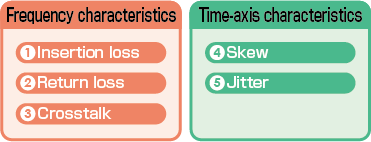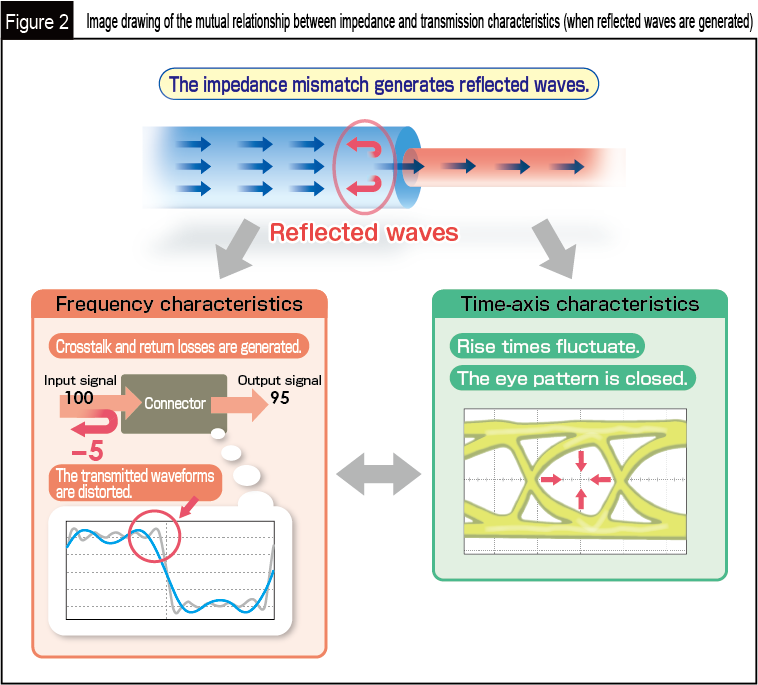Up to this point, the previous articles explained individual terms indicating frequency characteristics and time-axis characteristics. To finish up the basic courses of transmission characteristics, this article explains the major viewpoints required to improve transmission characteristics.
You have become familiar with individual terms indicating frequency characteristics and time-axis characteristics, haven't you? Do you perfectly understand the individual terms? (We recommend that those who do not understand them check the two previous articles here and here. ) As you know, all these frequency characteristics and time-axis characteristics influence the waveforms of transmitted electric signals.

You can get helpful hints for achieving data transmission with excellent quality for your product by individually evaluating frequency characteristics, time-axis characteristics, and the impedance of data transmission paths.
This is because they have mutual relationships as shown in Fig. 1 below.

A previous article informed that impedance indicates how easily signals pass through transmission paths.
When there is an impedance mismatch between different transmission paths, reflected waves are generated as shown in the following figure.
- Reflected waves will cause return losses and crosstalk.
- When return losses and crosstalk are generated, transmitted waveforms are distorted.
- Transmitted waveforms are distorted. = Rise times fluctuate. = Eye patterns are closed.

To achieve high-speed transmission, it is essential to verify where, how much, and in what way normal data transmission is inhibited through the individual evaluation of frequency characteristics, time-axis characteristics, and impedance mismatches. Let's evaluate transmission paths in a diversified manner by using S-parameters, eye patterns, and impedance data, introduced in and up to the previous course.
Panasonic provides these types of evaluation results of connectors in response to customer demand.
How were the above explanations? This article explained the important viewpoints required to evaluate transmission characteristics for the final summary of the descriptions of transmission characteristics that determine the success or failure in high-speed transmission. Please make effective use of this information when designing your products.





